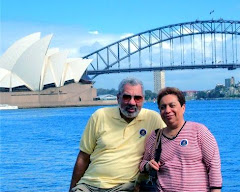In this time of being ever busy, some find it difficult to allocate time for rest and relaxation. Rest and Relaxation are the primary reasons for taking a cruise. Now you can have time at sea and even do a little work while you’re there. That of course is only if you really feel that you must.
In addition to being able to use your cell phone on many ships you can also have access to the World Wide Web while aboard. There are several ways in which this can be accomplished. Most of today’s cruise ships have fully equipped internet cafés where passengers can surf the web, send and receive e-mail from their home internet service provider or other services such as AOL, Hotmail, G-Mail to mention but a few. Additionally, if they don’t have their own e-mail facility, passengers can use the cruise line’s e-mail system.
As an alternative to using the cruise ship’s equipment, passengers can also access the internet using their own laptop computer. Use of one’s own equipment obviously increases the.jpg) security factor. This can be done in one of two ways; many ships have Wi-Fi available in some areas of the ship while others have Wi-Fi available all over the ship including passenger staterooms. In addition to having Wi-Fi capability, some ships have a direct connection Ethernet port right in the passengers’ staterooms. All the passenger need do is connect to the port using an appropriate Ethernet cable. This use of a cable also enhances the security perspective over Wi-Fi.
security factor. This can be done in one of two ways; many ships have Wi-Fi available in some areas of the ship while others have Wi-Fi available all over the ship including passenger staterooms. In addition to having Wi-Fi capability, some ships have a direct connection Ethernet port right in the passengers’ staterooms. All the passenger need do is connect to the port using an appropriate Ethernet cable. This use of a cable also enhances the security perspective over Wi-Fi.
It is possible to carry on business from your ship while on the high seas. There is, however, a cost and the user must understand what that cost is and evaluate it against the need. The cruise lines usually have plans by which specific amounts of time can be purchased. Per minute charges are typically lower when a larger block of time is purchased (100 minutes at 30 cents per minutes versus 30 Minutes at 65 cents per minute). If the user opts not to purchase a plan they can still use the internet facilities on a minute by minute basis. This is the most expensive per minute cost. Printing is more often than not fairly expensive so the user must determine the need for the printed page.
When considering cellular telephone use while at sea, watch the rates. It can be very expensive. Please see our CELL PHONES ON THE HIGH SEAS blog.
Here’s the greatest thing about computers at sea. We have been able to fully conduct business while enjoying a cruise.
In addition to being able to use your cell phone on many ships you can also have access to the World Wide Web while aboard. There are several ways in which this can be accomplished. Most of today’s cruise ships have fully equipped internet cafés where passengers can surf the web, send and receive e-mail from their home internet service provider or other services such as AOL, Hotmail, G-Mail to mention but a few. Additionally, if they don’t have their own e-mail facility, passengers can use the cruise line’s e-mail system.
As an alternative to using the cruise ship’s equipment, passengers can also access the internet using their own laptop computer. Use of one’s own equipment obviously increases the
.jpg) security factor. This can be done in one of two ways; many ships have Wi-Fi available in some areas of the ship while others have Wi-Fi available all over the ship including passenger staterooms. In addition to having Wi-Fi capability, some ships have a direct connection Ethernet port right in the passengers’ staterooms. All the passenger need do is connect to the port using an appropriate Ethernet cable. This use of a cable also enhances the security perspective over Wi-Fi.
security factor. This can be done in one of two ways; many ships have Wi-Fi available in some areas of the ship while others have Wi-Fi available all over the ship including passenger staterooms. In addition to having Wi-Fi capability, some ships have a direct connection Ethernet port right in the passengers’ staterooms. All the passenger need do is connect to the port using an appropriate Ethernet cable. This use of a cable also enhances the security perspective over Wi-Fi.It is possible to carry on business from your ship while on the high seas. There is, however, a cost and the user must understand what that cost is and evaluate it against the need. The cruise lines usually have plans by which specific amounts of time can be purchased. Per minute charges are typically lower when a larger block of time is purchased (100 minutes at 30 cents per minutes versus 30 Minutes at 65 cents per minute). If the user opts not to purchase a plan they can still use the internet facilities on a minute by minute basis. This is the most expensive per minute cost. Printing is more often than not fairly expensive so the user must determine the need for the printed page.
When considering cellular telephone use while at sea, watch the rates. It can be very expensive. Please see our CELL PHONES ON THE HIGH SEAS blog.
Here’s the greatest thing about computers at sea. We have been able to fully conduct business while enjoying a cruise.

.jpg)

